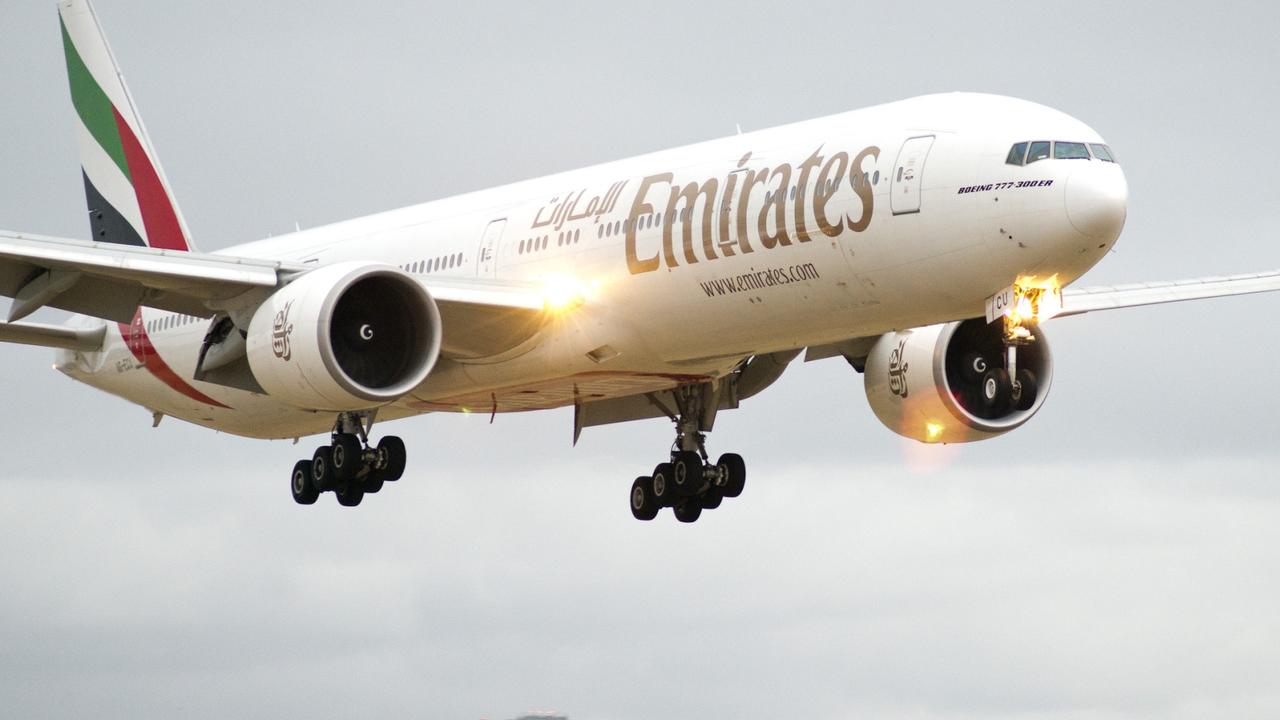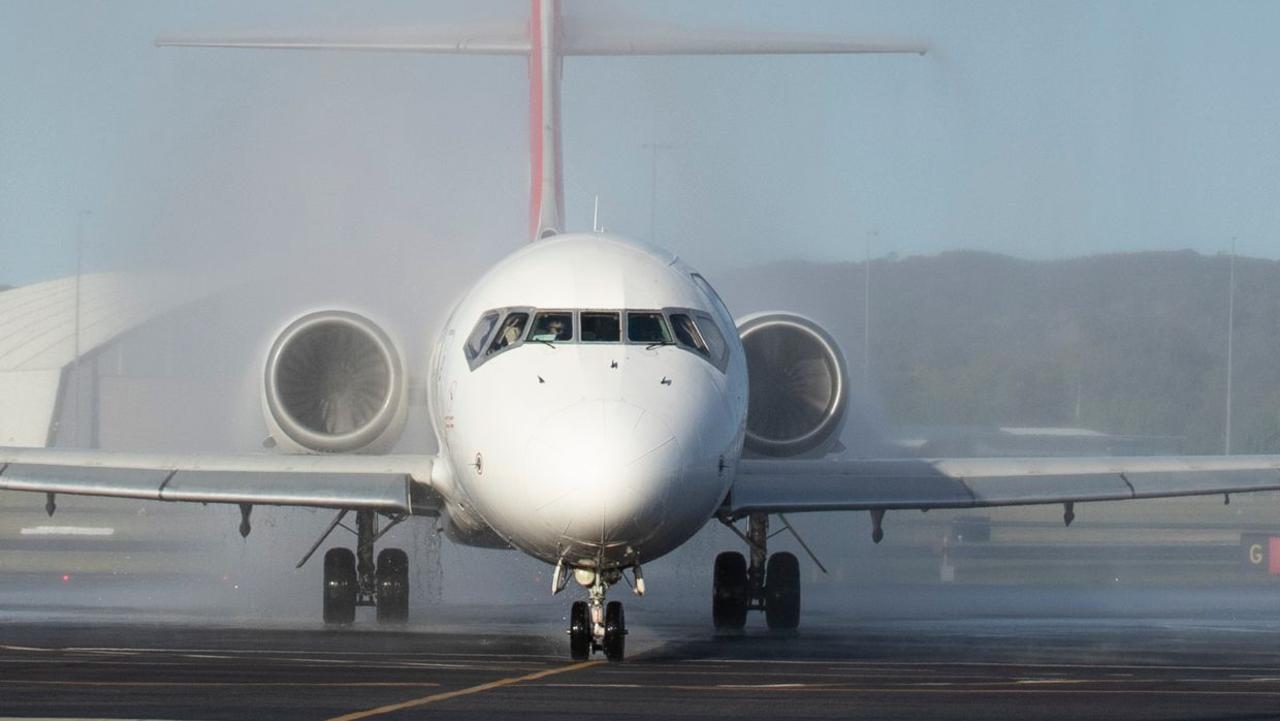‘Expect to pay high prices’: Aussies to fork out more than double on airfares this Christmas
Skyrocketing prices are causing headaches for Aussies in the lead-up to Christmas — and experts have a grim warning for travellers.
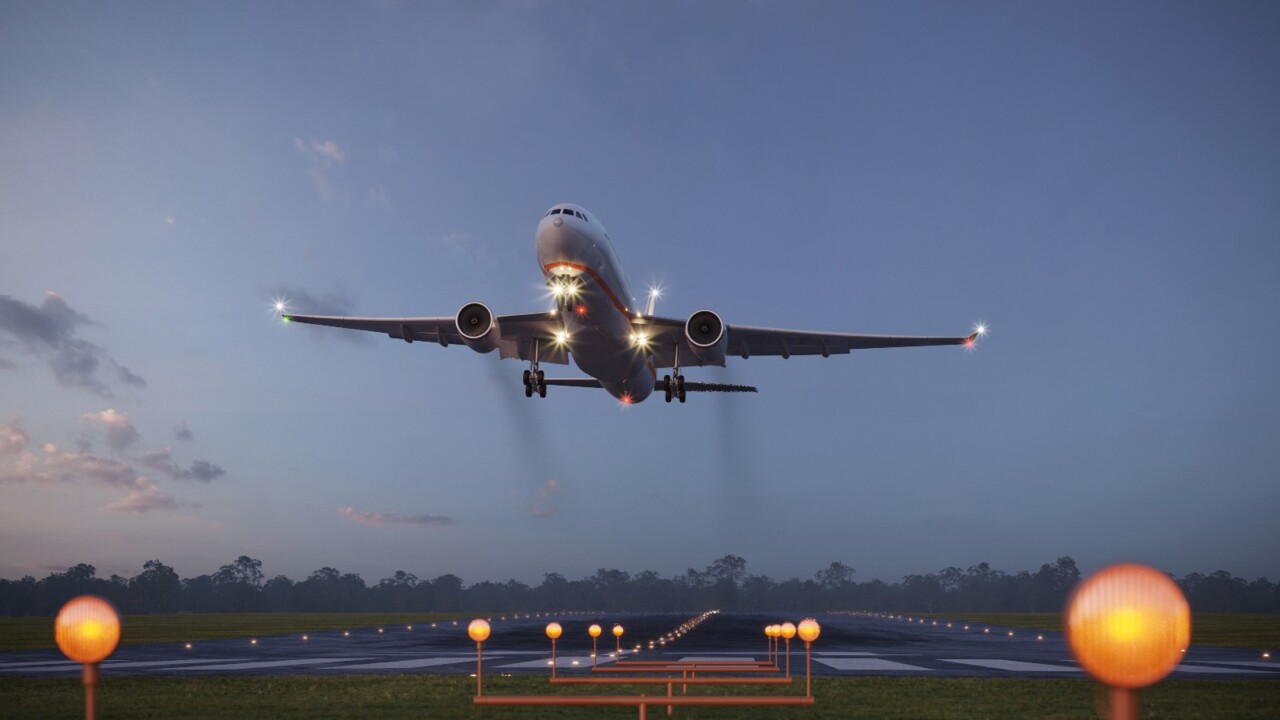
The age of cheap airfares is well and truly over.
Skyrocketing prices are causing headaches for Aussies in the lead-up to Christmas — and travellers have been warned not to expect prices to return to “before Covid” levels any time in the near future.
Airfares on some of the most popular routes have more than doubled thanks to a perfect storm of pent-up demand, reduced capacity and soaring fuel prices.
“It’s basically a ‘before Covid’ and ‘after Covid’ situation,” said tourism expert Dr David Beirman from University of Technology Sydney.
Melbourne to Sydney, the most popular domestic air travel route — and one of the world’s busiest — which carried 2.12 million passengers last year, has seen prices skyrocket.
At the time of writing, the cheapest overnight return ticket from Melbourne to Sydney leaving next Monday is currently around $452 with Jetstar, with a one-way ticket costing $357.
If someone needed to fly out on Friday, the cheapest overnight return ticket is $599 with Rex.
Meanwhile, a Brisbane to Sydney overnight round trip next Monday would cost $278 with Rex, and $185 one way.
To fly from Brisbane to Cairns, the third-busiest domestic route, costs $416 return with Jetstar on those dates and $116 one way.
On the number four route, Brisbane to Melbourne, the cheapest overnight return ticket on Monday is $526 with Rex, and $256 one-way with Jetstar.
Need to fly from Sydney to Perth next week? Good luck — the cheapest return airfare is $1345 with Virgin, and $693 one way.
Want to stream your news? Flash lets you stream 25+ news channels in 1 place. New to Flash? Try 1 month free. Offer ends 31 October, 2022 >

That’s more than triple pre-Covid levels.
“Between the early 1970s and 2019, airfares were going down year-by-year, particularly on those more competitive routes,” said Dr Beirman.
“For example, when I started in the travel industry in 1981, Sydney or Melbourne to Perth was about $1000 return. By 2019 it was pretty easy to get a return airfare to Perth for around $300. The same thing was happening in a lot of routes to Europe and Asia. Covid put the kybosh on a lot of that.”
Through 2020, 2021 and early 2022, there were so many restrictions put on airlines that they were “losing money hand over fist”.
Qantas lost about $7 billion during 2020-21, which was in line with many airlines around the world.
“Plus most airlines shed a hell of a lot of staff,” Dr Beirman said.
“So once travel was able to be resumed in 2022, we’re seeing people who have been hanging out to travel for a long time queuing up. Airlines had to rehire staff, which caused a lot of problems in terms of quality of service.”
When air travel resumed earlier this year some airlines were offering low fares to incentivise the market “but that was never going to last long”.
Airlines have had to offer higher wages to lure those employees back, driving up costs along with higher fuel prices.
“Plus the fact that just about every airline was put heavily into debt, unsurprisingly airfares have gone up,” he said. “It is a global problem, not just an Australian thing.”
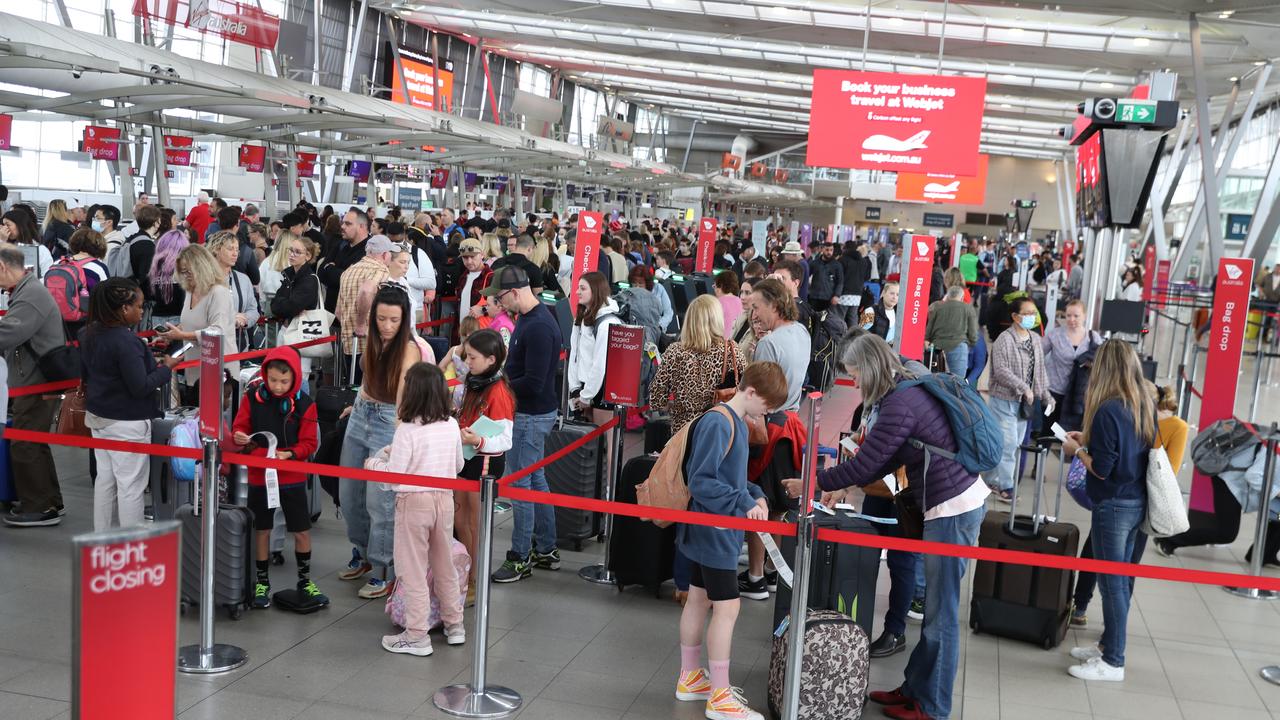
Grim warning ahead of Christmas holidays
According to comparison website Finder, 60 per cent of Australians are planning to fly in the next 12 months despite soaring airfares — up from 49 per cent in December.
That includes 29 per cent who plan to travel within Australia, 15 per cent who plan to travel internationally, and 16 per cent who plan to travel both domestically and overseas.
“Travel is back and lots of people are eager to fly — despite sky-high prices,” said Finder travel expert Angus Kidman.
“Australians looking to fly should be prepared for prices to remain steep until at least mid-2022, especially on international routes. Travel to Europe is likely to cost several thousand dollars across that period.”
Mr Kidman warned that anyone trying to book flights home for Christmas could expect to pay double already.
“Flying at Christmas has always been expensive — that’s not new post-pandemic,” he said.
“If you don’t already have a flight booked, expect to pay high prices. One-way flights from Sydney to Melbourne which might routinely go for $150 are selling now for $300 or more. There are a few relatively cheaper seats if you go first thing in the morning or last thing at night on some routes. But at this stage, booking flights around Christmas weekend is just not going to be cheap.”
Delaying travel until after January 10 might get you a cheaper price.
“With demand high, airlines have less incentive to offer sale fares,” he said.
“Why risk selling cheap seats and then having unhappy customers and hotel bills to pay when you cancel flights because of staff shortages? Qantas has been very blunt about this, noting in its recent results update that it intends to ‘fully recover higher fuel costs through fares’. Capacity on international routes out of Australia remains at a fraction of pre-pandemic levels, and the big players don’t plan to expand that until mid-2023.”
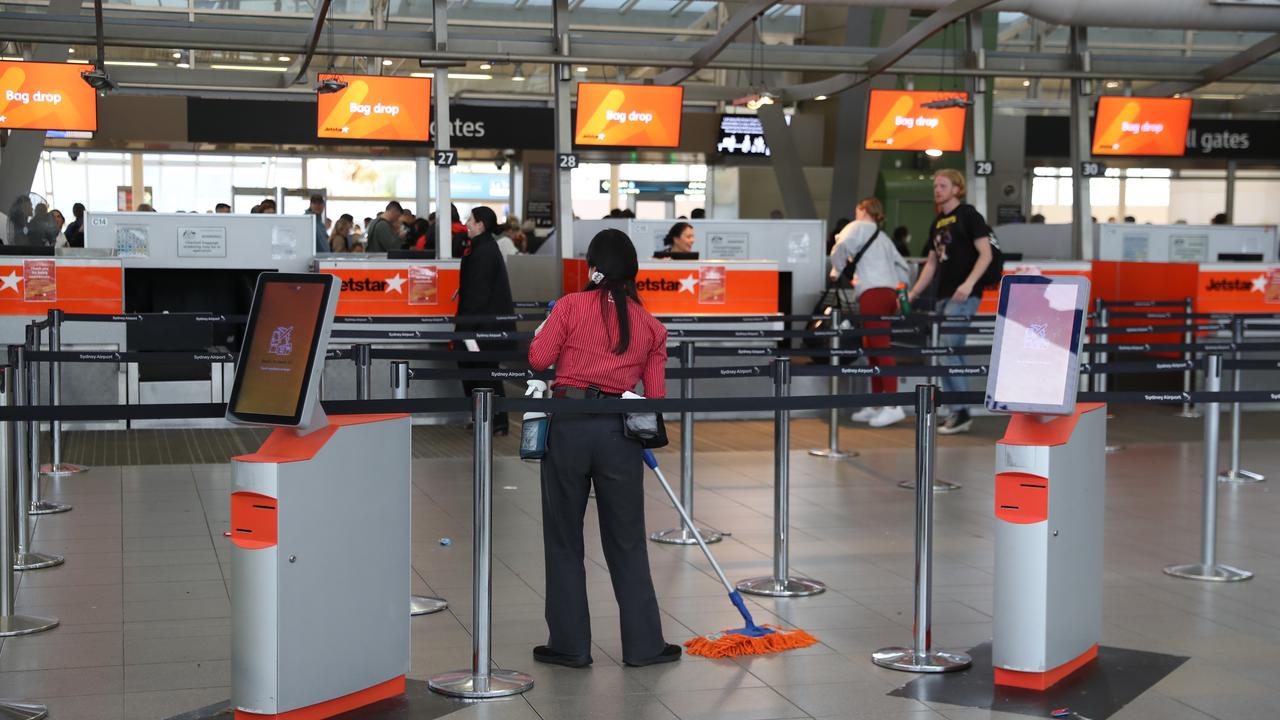
Mr Kidman said if travellers had a destination in mind but the price was too high, they could set up a price alert to be notified whenever the fare changes.
“Booking sites such as KAYAK and Skyscanner offer this,” he said.
“Weekend flights from Friday to Sunday are often the most expensive and most in demand. If you can fly out on a weekday — Tuesday is often the cheapest — that can really help to keep costs down. Book as early as you can. If you see a cheap international fare — snag it straight away.”
He added, “Don’t forget to book your travel insurance as soon as you’ve locked in your trip. This will ensure you’re covered for any cancellation costs, including those the airline might not cover such as prepaid accommodation.”
According to the Australian Competition and Consumer Commission, domestic airfares soared this year as airlines reduced capacity to manage staff shortages, and jet fuel costs climbed.
The consumer watchdog’s quarterly report released last month showed the cheapest economy airfares were 56 per cent higher in August than April, when they hit an 11-year low.
Business airfares rose by 17 per cent between June and August.
“After about 18 months of historically low airfares, the cost of domestic flying has risen sharply in response to strong demand, temporary capacity reductions and very high jet fuel prices,” ACCC chair Gina Cass-Gottlieb said in a statement.
“Discount economy airfares in August were at their highest point in almost two years.”
About 4.7 million passengers flew domestically in July this year, the highest since the start of the pandemic, and 89 per cent of the passenger volume in July 2019.
Travel to Queensland was particularly popular in July 2022.
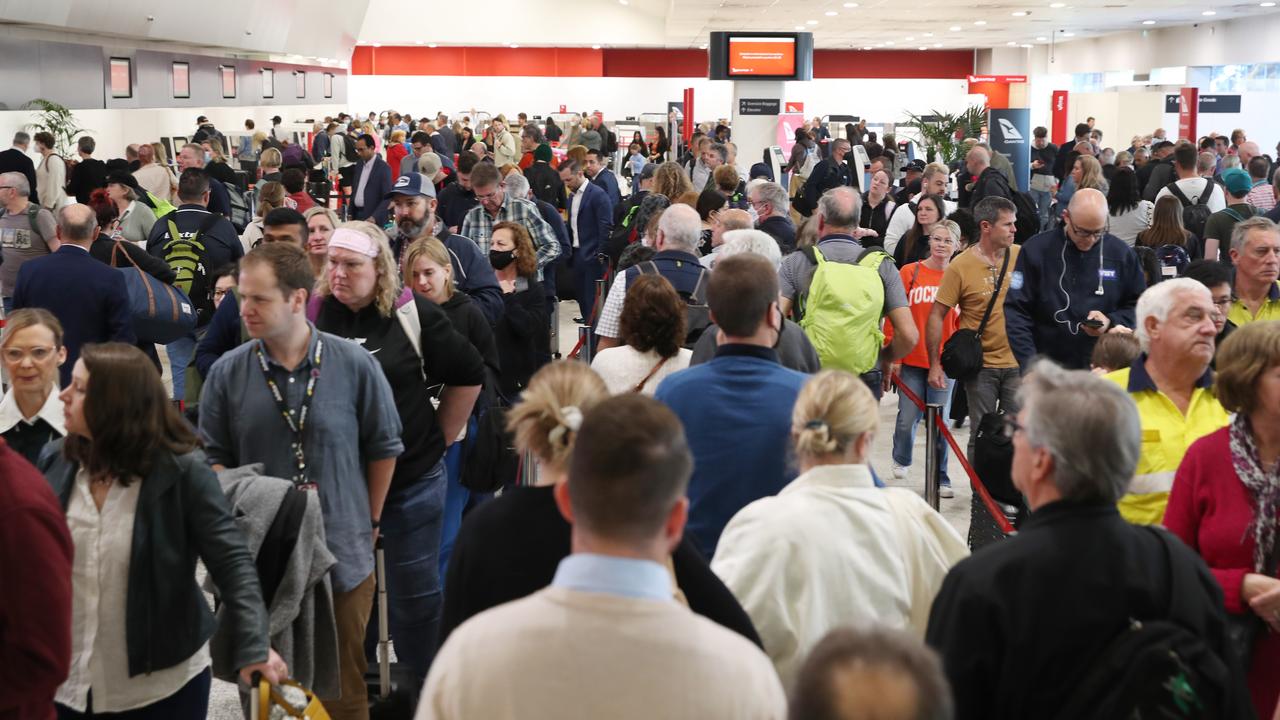
The number of passengers flying between Canberra and the Gold Coast almost doubled compared to July 2019. Travel between the Gold Coast and each of Melbourne and Adelaide also surpassed pre-pandemic demand.
“Pent up demand for leisure travel, particularly from people in the colder southern states, continues to drive the recovery in passenger numbers,” Ms Cass-Gottlieb said.
“Demand on routes between Canberra, Melbourne and Sydney has lagged behind, in part due to the slower recovery of corporate and business travel.”
The watchdog noted that many consumers were unhappy with the record delays, high rates of cancellations, lost baggage and long call centre wait times.
“We have been engaging closely with airlines to understand the source of these problems,” Ms Cass-Gottlieb said.
Rex performed significantly better than other airlines in punctuality and rate of cancellations, which it attributed to keeping its staff despite reduced flying over the past two years.
“We expect that airlines will be honest and proactive in communicating to passengers the reasons why a flight is delayed or cancelled, how the consumer guarantees apply, and what other compensation they are entitled to,” Ms Cass-Gottlieb said.
Dr Beirman said travellers could expect prices to remain high “well into next year”.
“I would say as a ballpark figure probably 10 to 20 per cent higher than pre-Covid,” he said.
Longer-term, though, Dr Beirman predicts the “market will start to rebel at high fares”.
“Sydney to London, Sydney to LA, some of the major domestic routes, I think competitive pressure will probably lead to some airfares coming down [or they will] lose passengers,” he said.




